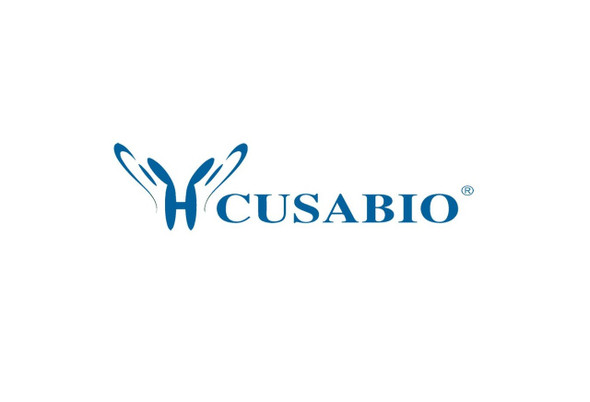Cusabio Human Recombinants
Recombinant Human Succinate-semialdehyde dehydrogenase, mitochondrial (ALDH5A1) | CSB-YP001577HU
- SKU:
- CSB-YP001577HU
- Availability:
- 25 - 35 Working Days
Description
Recombinant Human Succinate-semialdehyde dehydrogenase, mitochondrial (ALDH5A1) | CSB-YP001577HU | Cusabio
Alternative Name(s): Aldehyde dehydrogenase family 5 member A1;NAD(+)-dependent succinic semialdehyde dehydrogenase
Gene Names: ALDH5A1
Research Areas: Metabolism
Organism: Homo sapiens (Human)
AA Sequence: AGRLAGLSAALLRTDSFVGGRWLPAAATFPVQDPASGAALGMVADCGVREARAAVRAAYEAFCRWREVSAKERSSLLRKWYNLMIQNKDDLARIITAESGKPLKEAHGEILYSAFFLEWFSEEARRVYGDIIHTPAKDRRALVLKQPIGVAAVITPWNFPSAMITRKVGAALAAGCTVVVKPAEDTPFSALALAELASQAGIPSGVYNVIPCSRKNAKEVGEAICTDPLVSKISFTGSTTTGKILLHHAANSVKRVSMELGGLAPFIVFDSANVDQAVAGAMASKFRNTGQTCVCSNQFLVQRGIHDAFVKAFAEAMKKNLRVGNGFEEGTTQGPLINEKAVEKVEKQVNDAVSKGATVVTGGKRHQLGKNFFEPTLLCNVTQDMLCTHEETFGPLAPVIKFDTEEEAIAIANAADVGLAGYFYSQDPAQIWRVAEQLEVGMVGVNEGLISSVECPFGGVKQSGLGREGSKYGIDEYLELKYVCYGGL
Source: Yeast
Tag Info: N-terminal 6xHis-tagged
Expression Region: 48-535aa
Sequence Info: Full Length of Mature Protein
MW: 54.3 kDa
Purity: Greater than 90% as determined by SDS-PAGE.
Relevance: Catalyzes one step in the degradation of the inhibitory neurotransmitter gamma-aminobutyric acid (GABA).
Reference: The DNA sequence and analysis of human chromosome 6.Mungall A.J., Palmer S.A., Sims S.K., Edwards C.A., Ashurst J.L., Wilming L., Jones M.C., Horton R., Hunt S.E., Scott C.E., Gilbert J.G.R., Clamp M.E., Bethel G., Milne S., Ainscough R., Almeida J.P., Ambrose K.D., Andrews T.D. , Ashwell R.I.S., Babbage A.K., Bagguley C.L., Bailey J., Banerjee R., Barker D.J., Barlow K.F., Bates K., Beare D.M., Beasley H., Beasley O., Bird C.P., Blakey S.E., Bray-Allen S., Brook J., Brown A.J., Brown J.Y., Burford D.C., Burrill W., Burton J., Carder C., Carter N.P., Chapman J.C., Clark S.Y., Clark G., Clee C.M., Clegg S., Cobley V., Collier R.E., Collins J.E., Colman L.K., Corby N.R., Coville G.J., Culley K.M., Dhami P., Davies J., Dunn M., Earthrowl M.E., Ellington A.E., Evans K.A., Faulkner L., Francis M.D., Frankish A., Frankland J., French L., Garner P., Garnett J., Ghori M.J., Gilby L.M., Gillson C.J., Glithero R.J., Grafham D.V., Grant M., Gribble S., Griffiths C., Griffiths M.N.D., Hall R., Halls K.S., Hammond S., Harley J.L., Hart E.A., Heath P.D., Heathcott R., Holmes S.J., Howden P.J., Howe K.L., Howell G.R., Huckle E., Humphray S.J., Humphries M.D., Hunt A.R., Johnson C.M., Joy A.A., Kay M., Keenan S.J., Kimberley A.M., King A., Laird G.K., Langford C., Lawlor S., Leongamornlert D.A., Leversha M., Lloyd C.R., Lloyd D.M., Loveland J.E., Lovell J., Martin S., Mashreghi-Mohammadi M., Maslen G.L., Matthews L., McCann O.T., McLaren S.J., McLay K., McMurray A., Moore M.J.F., Mullikin J.C., Niblett D., Nickerson T., Novik K.L., Oliver K., Overton-Larty E.K., Parker A., Patel R., Pearce A.V., Peck A.I., Phillimore B.J.C.T., Phillips S., Plumb R.W., Porter K.M., Ramsey Y., Ranby S.A., Rice C.M., Ross M.T., Searle S.M., Sehra H.K., Sheridan E., Skuce C.D., Smith S., Smith M., Spraggon L., Squares S.L., Steward C.A., Sycamore N., Tamlyn-Hall G., Tester J., Theaker A.J., Thomas D.W., Thorpe A., Tracey A., Tromans A., Tubby B., Wall M., Wallis J.M., West A.P., White S.S., Whitehead S.L., Whittaker H., Wild A., Willey D.J., Wilmer T.E., Wood J.M., Wray P.W., Wyatt J.C., Young L., Younger R.M., Bentley D.R., Coulson A., Durbin R.M., Hubbard T., Sulston J.E., Dunham I., Rogers J., Beck S.Nature 425:805-811(2003)
Storage: The shelf life is related to many factors, storage state, buffer ingredients, storage temperature and the stability of the protein itself. Generally, the shelf life of liquid form is 6 months at -20?/-80?. The shelf life of lyophilized form is 12 months at -20?/-80?.
Notes: Repeated freezing and thawing is not recommended. Store working aliquots at 4? for up to one week.
Function: Catalyzes one step in the degradation of the inhibitory neurotransmitter gamma-aminobutyric acid (GABA).
Involvement in disease: Succinic semialdehyde dehydrogenase deficiency (SSADHD)
Subcellular Location: Mitochondrion
Protein Families: Aldehyde dehydrogenase family
Tissue Specificity: Brain, pancreas, heart, liver, skeletal muscle and kidney. Lower in placenta.
Paythway:
Form: Liquid or Lyophilized powder
Buffer: If the delivery form is liquid, the default storage buffer is Tris/PBS-based buffer, 5%-50% glycerol. If the delivery form is lyophilized powder, the buffer before lyophilization is Tris/PBS-based buffer, 6% Trehalose, pH 8.0.
Reconstitution: We recommend that this vial be briefly centrifuged prior to opening to bring the contents to the bottom. Please reconstitute protein in deionized sterile water to a concentration of 0.1-1.0 mg/mL.We recommend to add 5-50% of glycerol (final concentration) and aliquot for long-term storage at -20?/-80?. Our default final concentration of glycerol is 50%. Customers could use it as reference.
Uniprot ID: P51649
HGNC Database Link: HGNC
UniGene Database Link: UniGene
KEGG Database Link: KEGG
STRING Database Link: STRING
OMIM Database Link: OMIM






![Recombinant Human Succinate dehydrogenase [ubiquinone] flavoprotein subunit, mitochondrial (SDHA), partial Recombinant Human Succinate dehydrogenase [ubiquinone] flavoprotein subunit, mitochondrial (SDHA), partial](https://cdn11.bigcommerce.com/s-rvypo0hmzw/images/stencil/590x590/products/2984/5592/cusabio__81676.1638370075__17374.1638524599.jpg?c=1)
![Recombinant Human Succinate dehydrogenase [ubiquinone] flavoprotein subunit, mitochondrial (SDHA), partial Recombinant Human Succinate dehydrogenase [ubiquinone] flavoprotein subunit, mitochondrial (SDHA), partial](https://cdn11.bigcommerce.com/s-rvypo0hmzw/images/stencil/590x590/products/2982/5588/cusabio__81676.1638370075__22886.1638524598.jpg?c=1)
![Recombinant Human Succinate dehydrogenase [ubiquinone] flavoprotein subunit, mitochondrial (SDHA), partial Recombinant Human Succinate dehydrogenase [ubiquinone] flavoprotein subunit, mitochondrial (SDHA), partial](https://cdn11.bigcommerce.com/s-rvypo0hmzw/images/stencil/590x590/products/2983/5590/cusabio__81676.1638370075__78739.1638524598.jpg?c=1)
